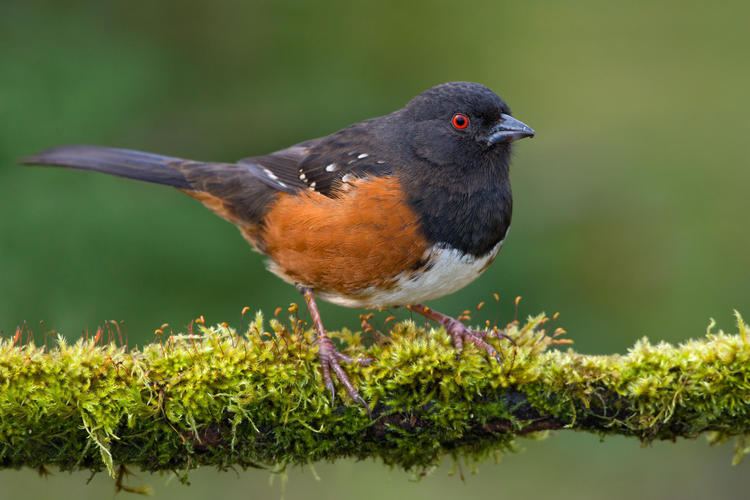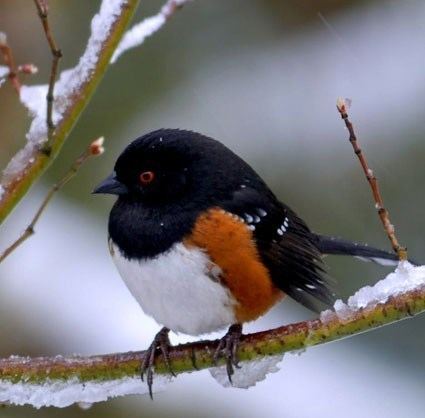Class Aves Family Emberizidae | Phylum Chordata Order Passeriformes Genus Pipilo Rank Species | |
 | ||
Similar Bird, California towhee, Golden‑crowned sparrow, Dark‑eyed junco, Black‑headed grosbeak | ||
Spotted towhee song call wasatch mountains utah
The spotted towhee (Pipilo maculatus) is a large New World sparrow. The taxonomy of the towhees has been debated in recent decades, and until 1995 this bird and the eastern towhee were considered a single species, the Rufous-sided Towhee. An archaic name for the spotted towhee is the Oregon towhee (Pipilo maculatus oregonus).
Contents
The form that breeds on Socorro Island is much smaller than other rufous-sided towhees, and has gray upperparts. It is sometimes split as the Socorro towhee (Pipilo socorroensis).

Spotted towhee singing
Description

Adults have rufous sides, a white belly and a long dark tail with white edges. The eyes are red. They have white spots on their back and white wing bars. Males have a dark head, upper body and tail; these parts are brown or gray in the female.

The western spotted towhee has white spots on its primary and secondary feathers. The eastern towhee is the same bird in terms of its size and structure but does not have white spots.
They have a round, chunky body, fan shaped tail, short, thick beak, and dull pink legs.
Behavior

Northwestern birds migrate eastwards to the central plains of the United States, mostly the northwestern-central Great Plains. In other areas, some birds may move to lower elevations in the winter.
Their breeding habitat is chaparral, thickets or shrubby areas across western North America. This bird interbreeds with the collared towhee where their ranges overlap in southwestern Mexico.
They nest either on the ground or low in bushes, seldom more than 1.5 m (4.9 ft) above the ground. The female builds the nest over a period of about five days. It is bulky and sturdily made of leaves, strips of bark, twigs, forb stalks, and grasses, lined with pine needles, shredded bark, grass, and sometimes hair.
At least two broods, consisting of three to five eggs, are laid per season. The egg shells are grayish or creamy-white, sometimes with a tinge of green, with reddish brown spots that can form a wreath or cap. The female incubates the eggs alone for 12 to 14 days; the young leave the nest at 10 to 12 days. Nests are parasitized by cowbirds.
These birds forage on the ground or in low vegetation, with a habit of noisily rummaging through dry leaves searching for food. They mainly eat insects, acorns, seeds and berries.
The call may be harsher and more varied than for the eastern towhee.
